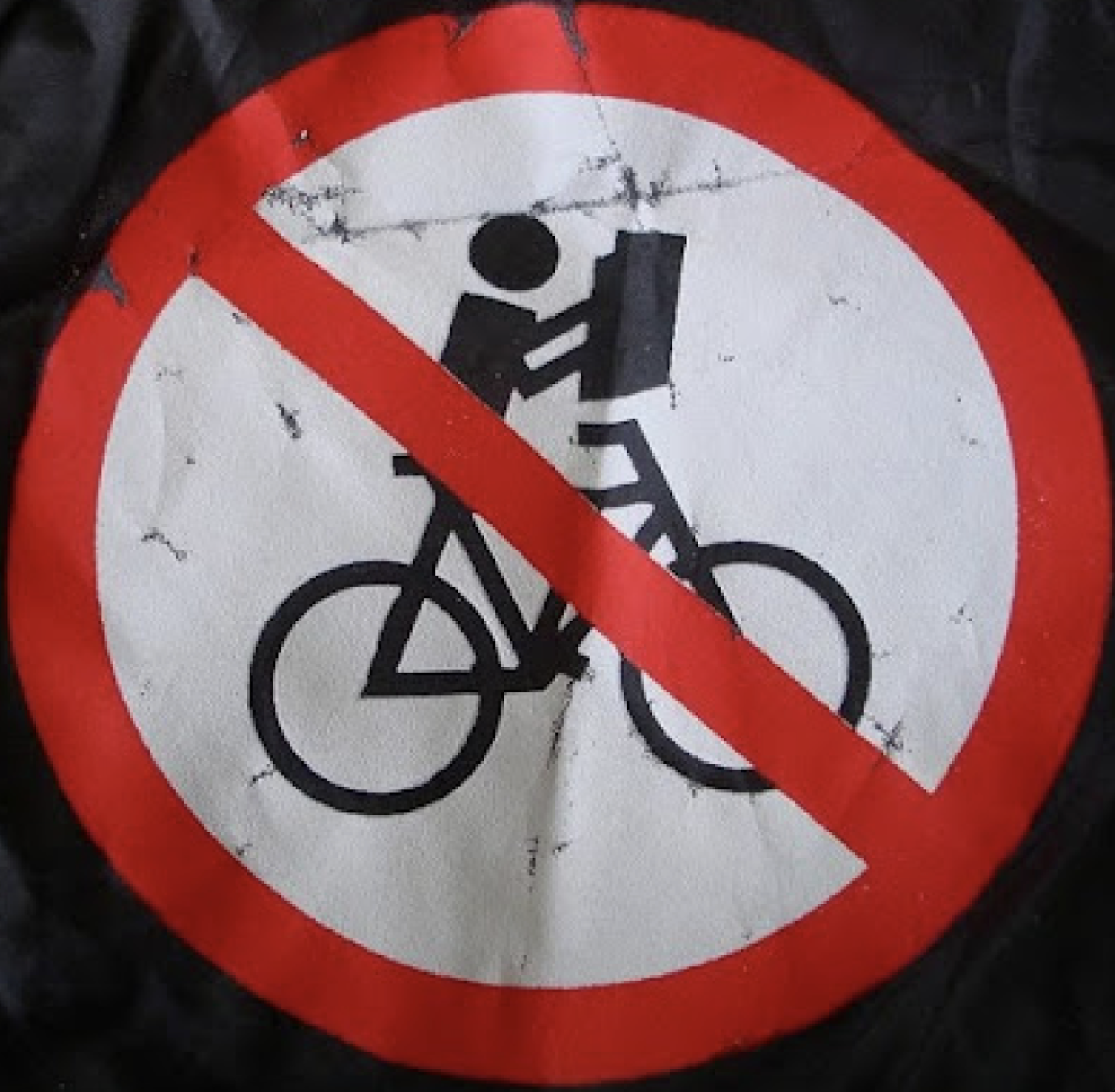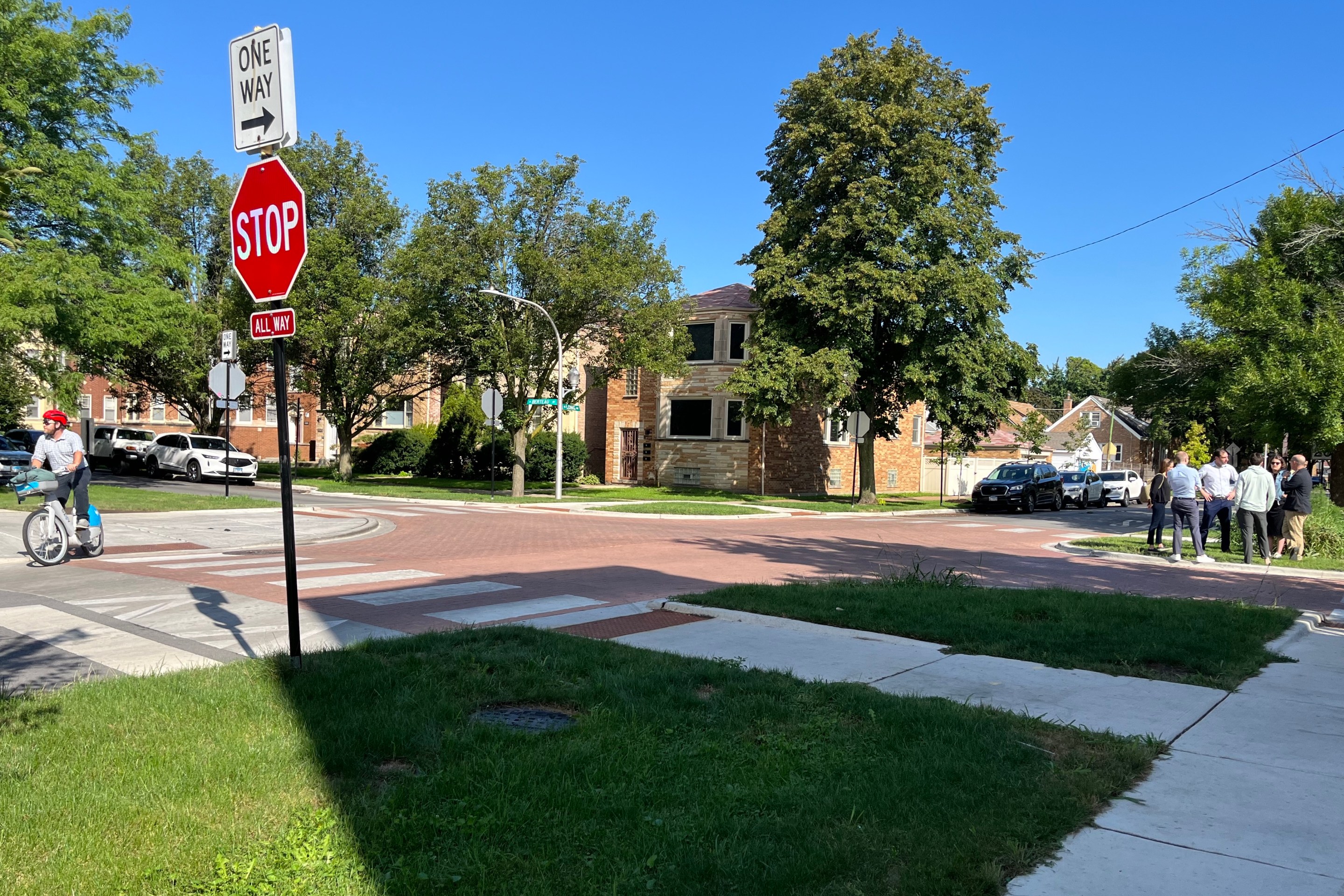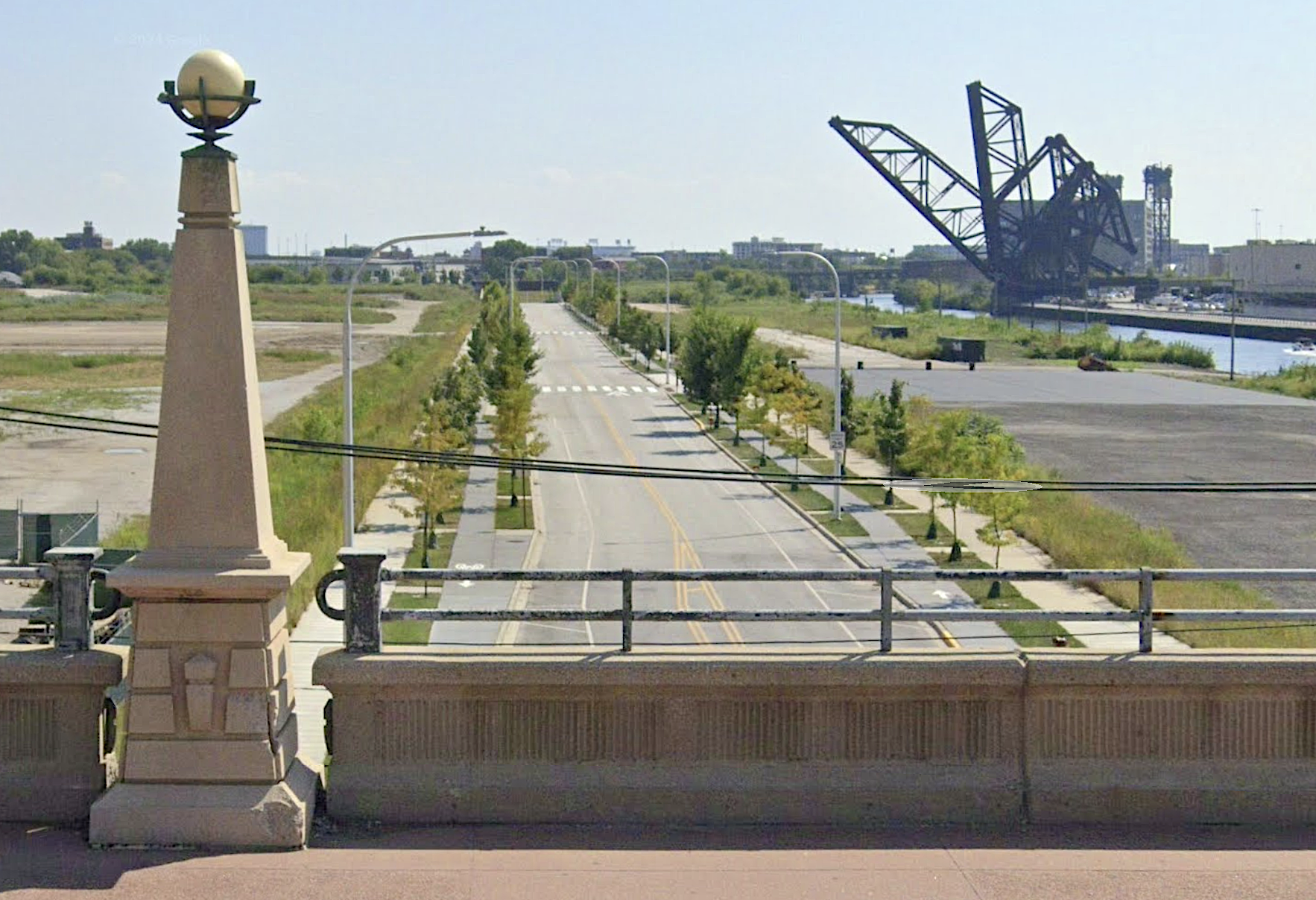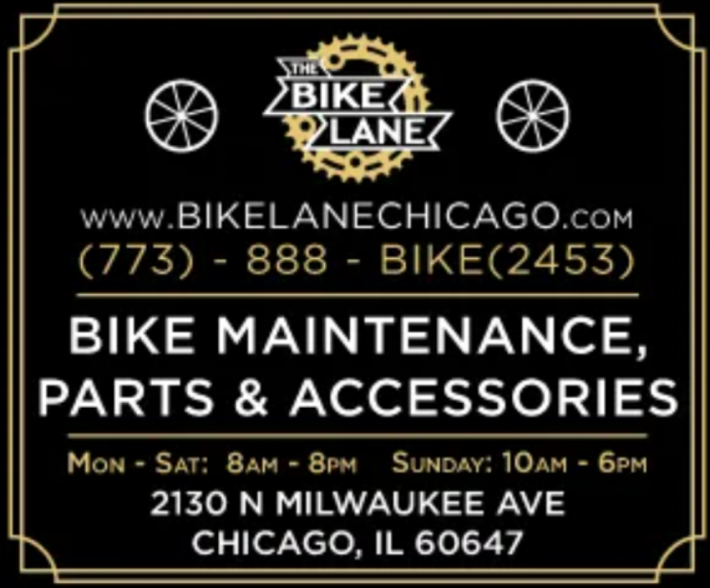
Last night's community meeting on the Chicago Avenue Bridge and Chicago-Halsted Viaduct Improvement Project for the new Bally's Casino revealed some upgrades to the plan to make it more sustainable transportation-friendly.
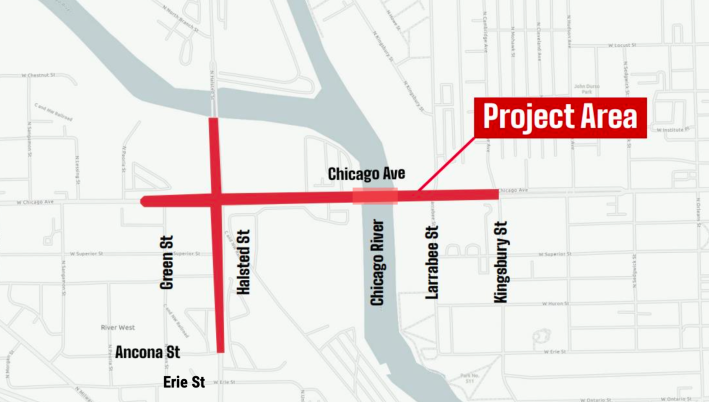
At the initial meeting on this project last Jauary, walk/bike/transit advocates pushed back against plans for widening Chicago Avenue (800 N.), arguing that it would induce more driving. They also criticized plans to improve bus and bike access as being merely half-measures.
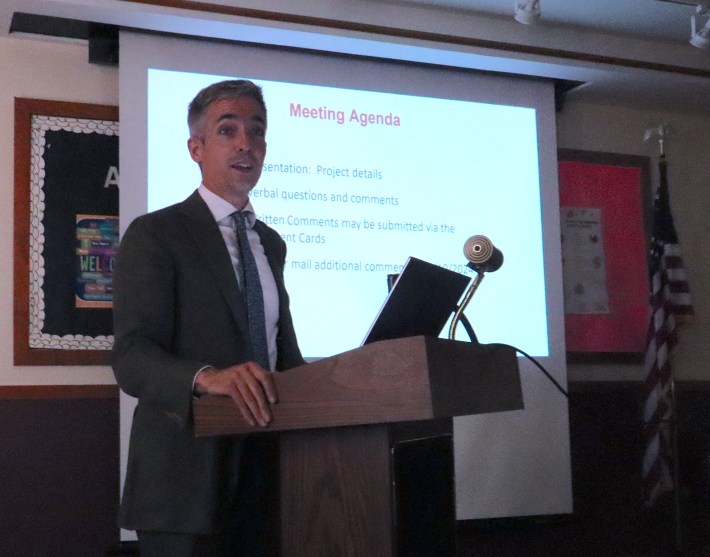
Yesterday's event took place at the Bucktown-Wicker Park library branch, 1701 N. Milwaukee Ave. Ald. Daniel La Spata (1st), chair of the City Council's Committee on Pedestrian and Traffic Safety helped kick off the meeting. He noted that, while the project isn't within his own ward, it will have a major influence on how Chicagoans will get around our city in 10, 15, and 50 years.
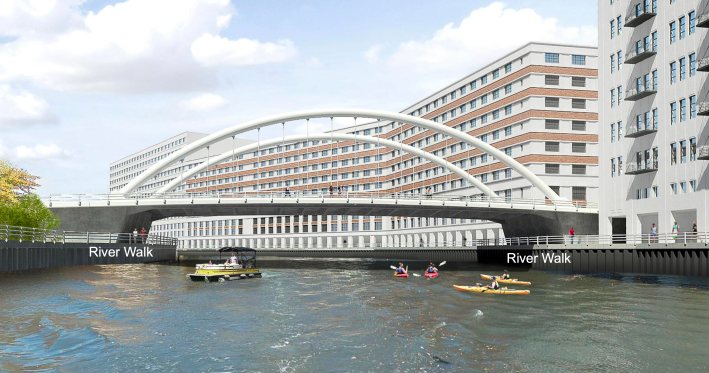
La Spata, one of the Council's most progressive members on transportation issues, indicated he thinks the Chicago Department of Transportation officials had made positive changes to the plans based on citizens' feedback. "We talk a lot about Complete Streets," he said. "I believe [this design] reflects where we're trying to go as a city, in terms of being a safe and sustainable city for transportation."
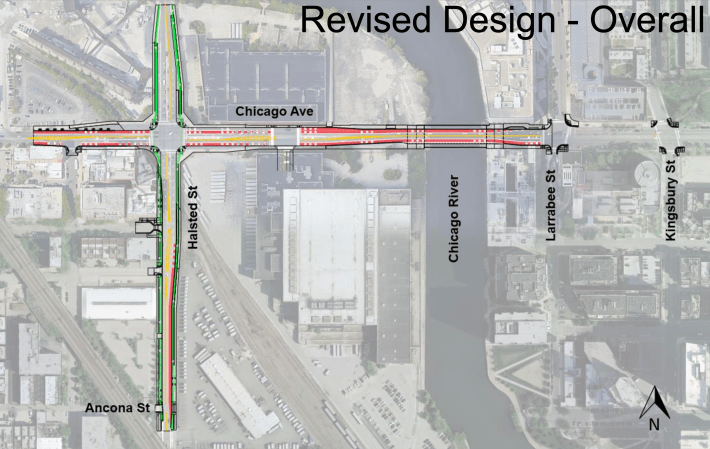
Soliman Khudeira, section chief of major projects at the Chicago Department of Transportation, which is running the project, provided details on the initiative. Phase I, primary engineering, and Phase II, Final Engineering, will both take place in the third quarter of 2024. The third and final phase, Construction, will happen from Q4 2024 to Q3 2026.
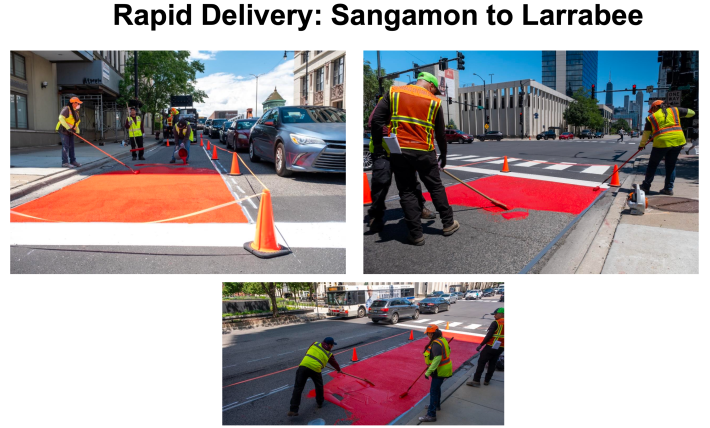
The project will remove the existing temporary Chicago Avenue bridge over the river and replace it with a tied-arch bridge. The Chicago-Halsted viaduct will also be removed and replaced with a new one. Chicago Avenue at Larrabee Street will be raised by six feet. A new riverwalk connection beneath the bridge, street lighting replacement, traffic signal modernization, and landscaping will also be included. CDOT says additional accommodations for pedestrians, bicycles, and transit will also be provided.
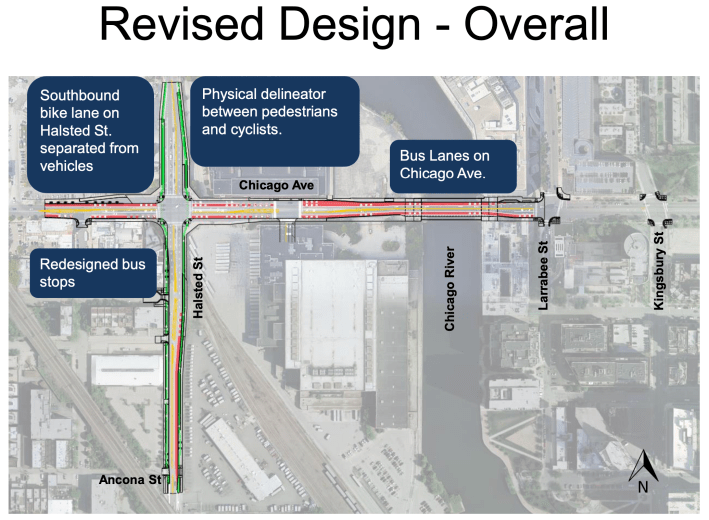
"What you'll see is very much reflective of what we're doing all across the city," said CDOT Complete Streets Director David Smith. "That momentum is picking up and is going to continue into the years to come. And that's a result of all the hard work of City agencies, elected officials, and most importantly, you guys and the community. So we all appreciate that partnership and look forward to talking more about this intersection."

Kirsten Mawhinney, civil department manager at AECOM, a consultant to the project, talked about the public input they received at the January meeting. For example, the plan called for raised bike lanes on both sides of Halsted Street (800 W.) between Chicago Avenue (800 N.) and Ancona Street (630 N.) In response to feedback they received, the planners added more space between the southbound bike lane and a bus stop.
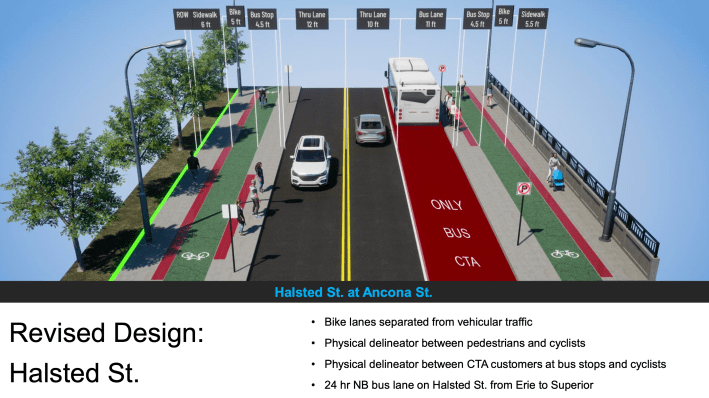
"We heard a lot of feedback at the January meeting about the design of that southbound bike lane." Mawhinny said. "So our team went back to the drawing board and was able to look at redesigning that to put the bike lane up at the sidewalk level, similar to the rest of the project."
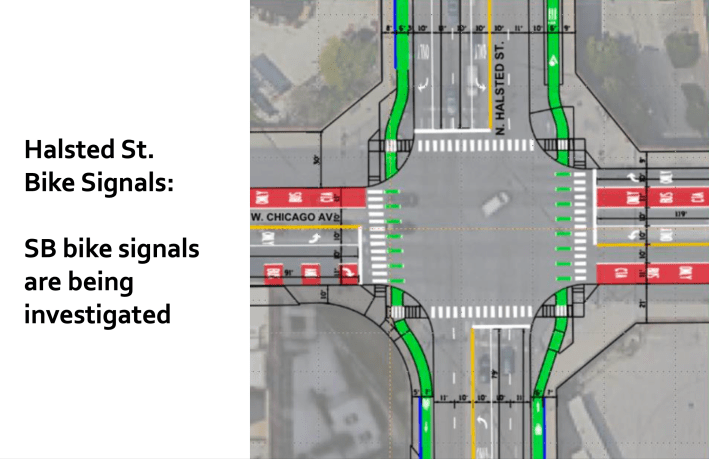
"So that allowed some cyclists heading south on Halsted to not have to be next to traffic, or have right-turning [drivers] crossing over with them," Mawhinny added. "They'll be able to enter right onto the sidewalk just south of the river bridge there."
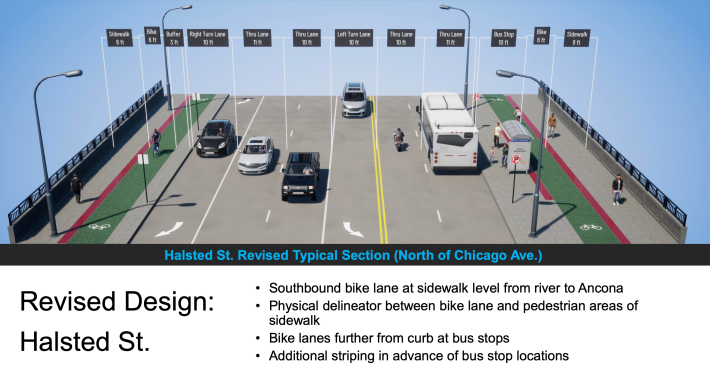
Attendee Austin Busch said it was great to see all of CDOT's revised designs, such as reducing crossing distances for pedestrians. However, Busch said he still has some concerns about whether plans for bus lane improvements and transit signal priority will be sufficiently robust. And he was worried that the construction project might delay buses and deter ridership.
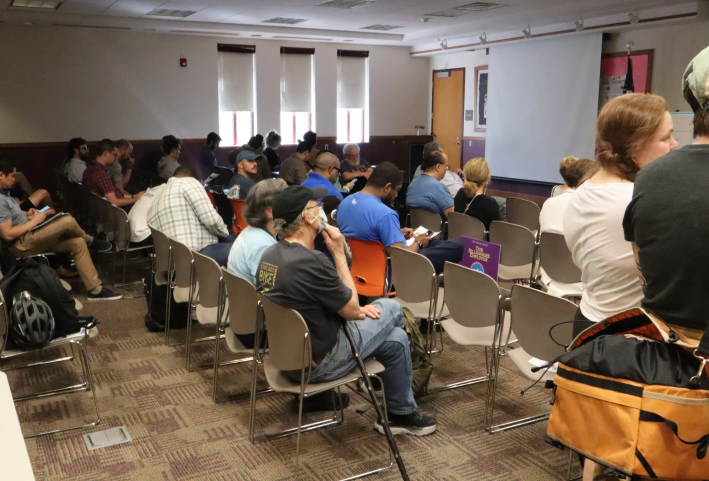
"Obviously, the bridge is going to be fully out during that period, and so prioritizing a detour is going to be of utmost importance," Busch said. "Our city has not done a lot of pop-up bus lanes for events. They don't even seem to be looking at them for the Democratic National Convention. But this would be the time to do that to make sure that we're not going to lose riders, particularly riders from the Far West Side trying to access jobs in Streeterville. If we lose that ridership now to people who then drive, it will be an uphill battle to get them back onto the improved bus system that we're building."

Did you appreciate this post? Please consider making a tax-deductible donation.


